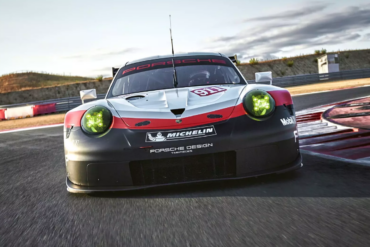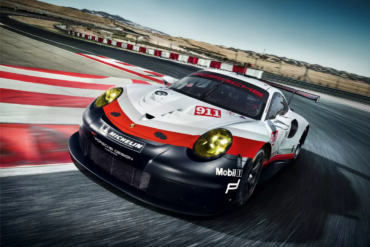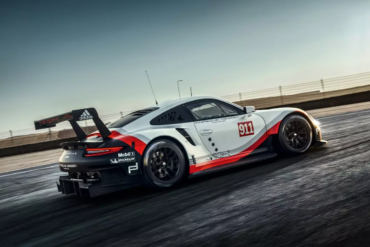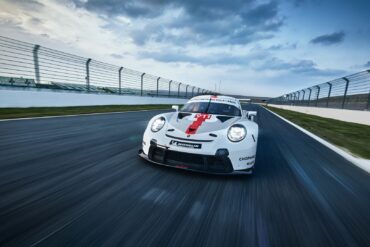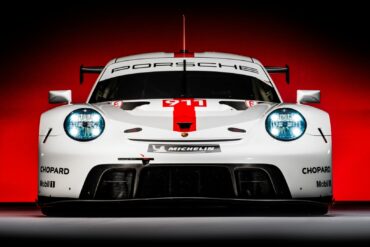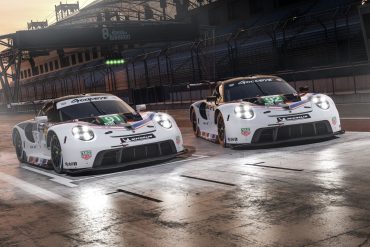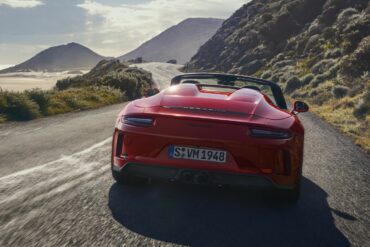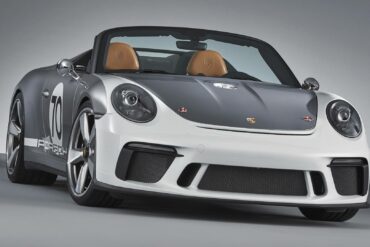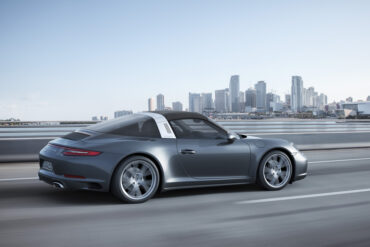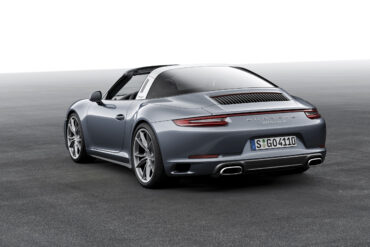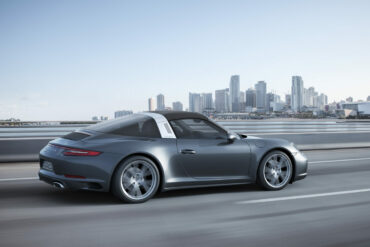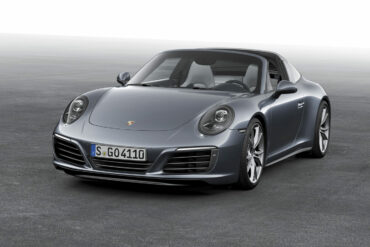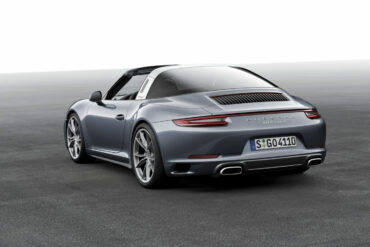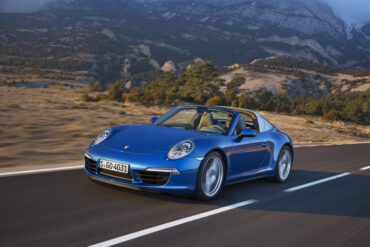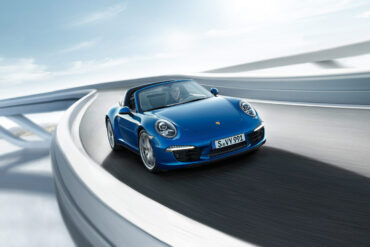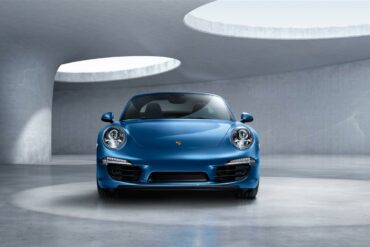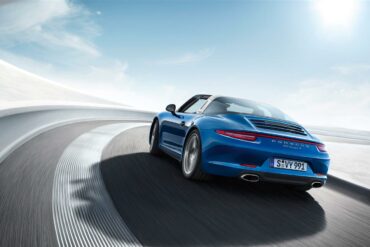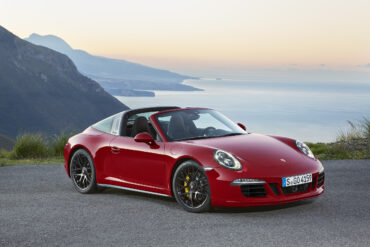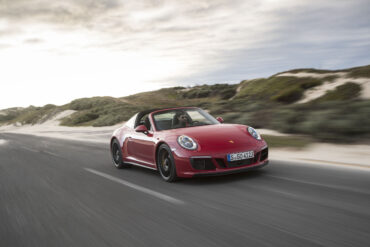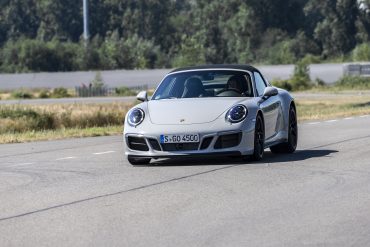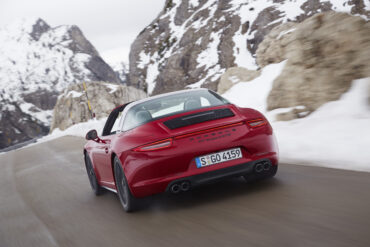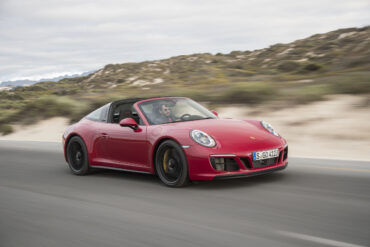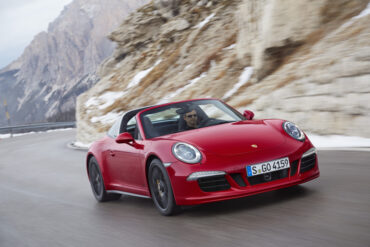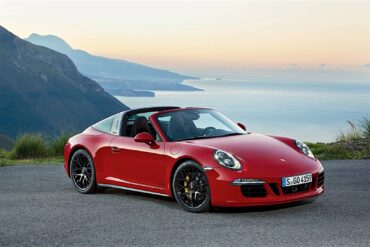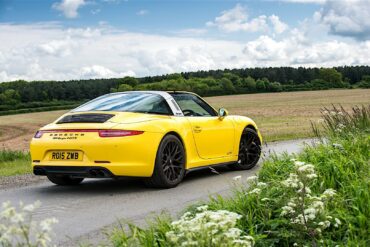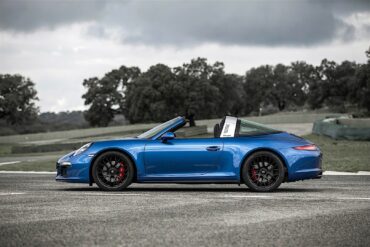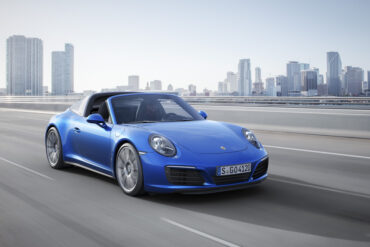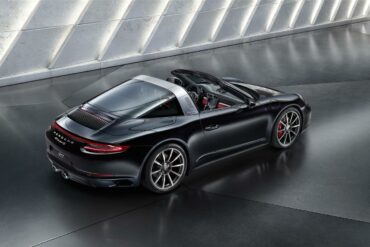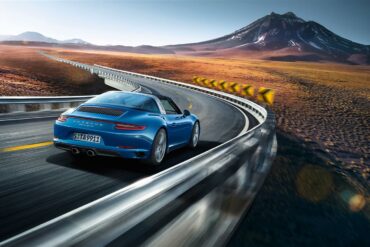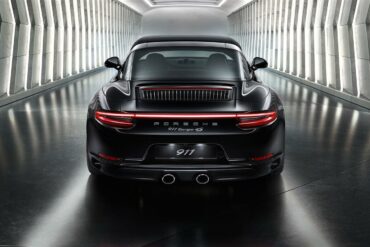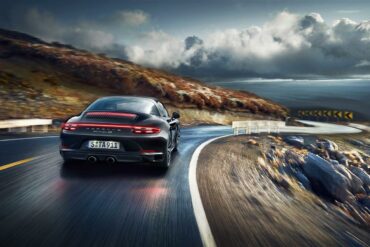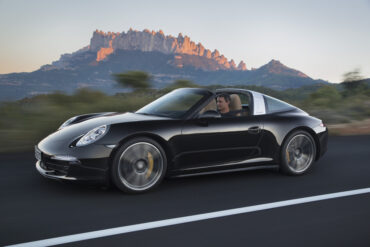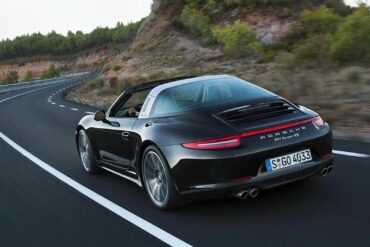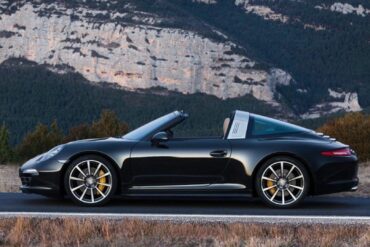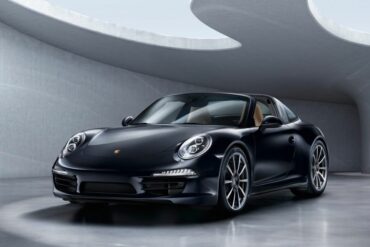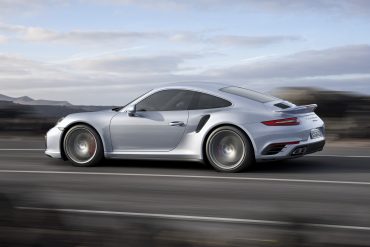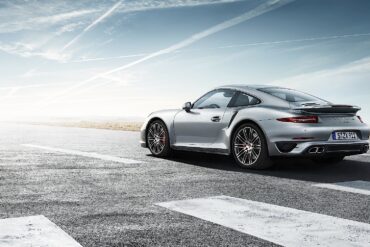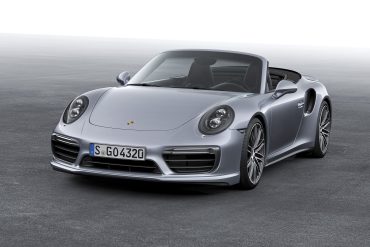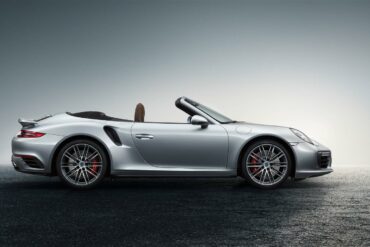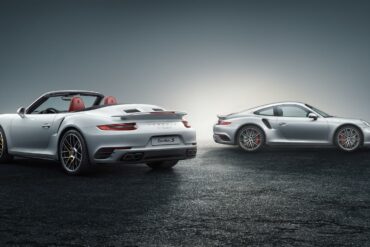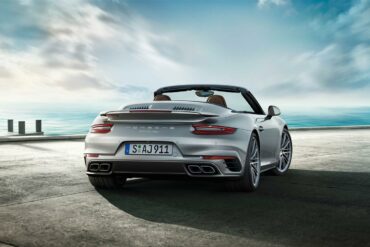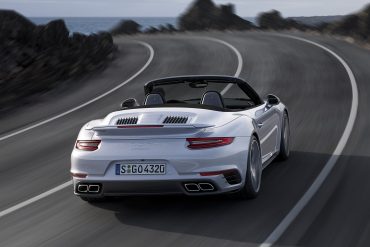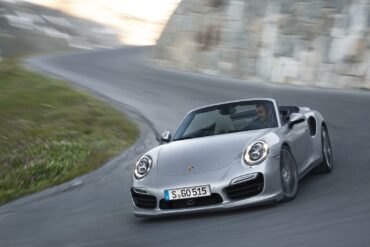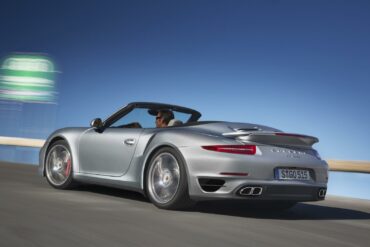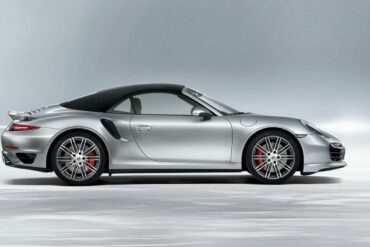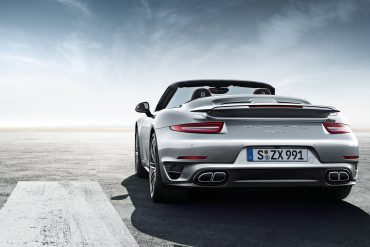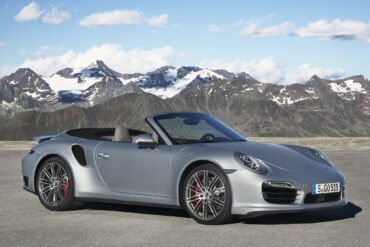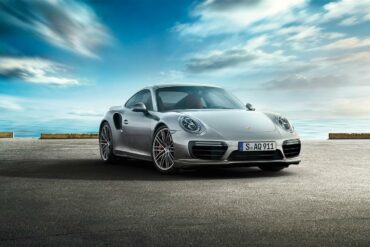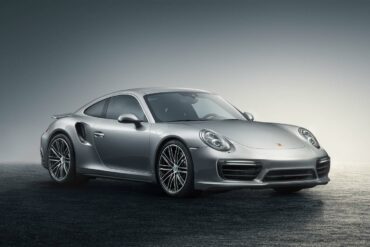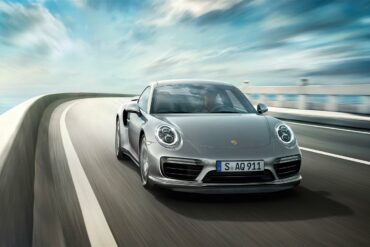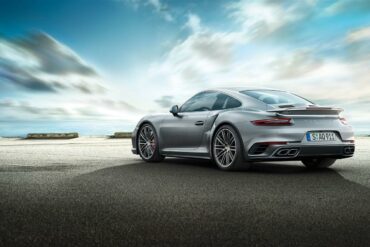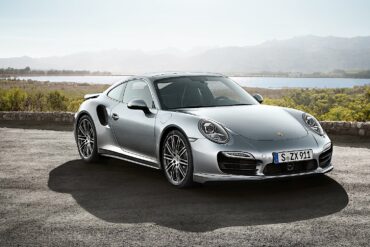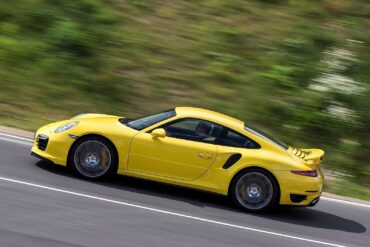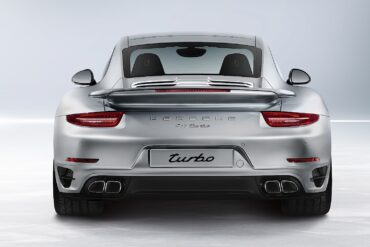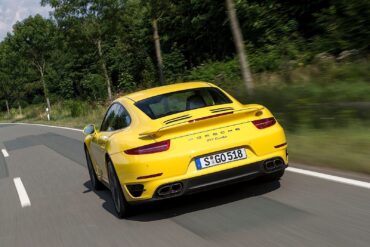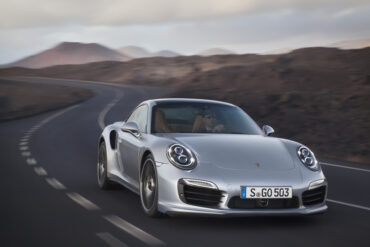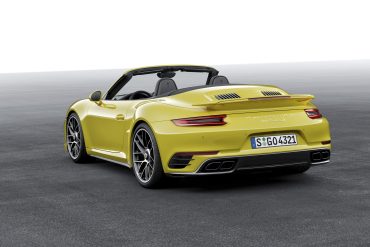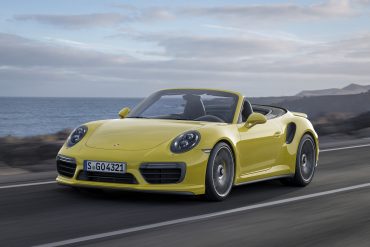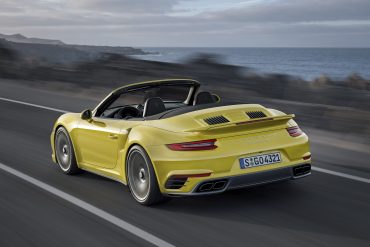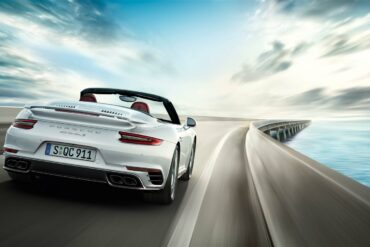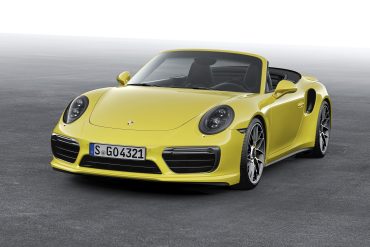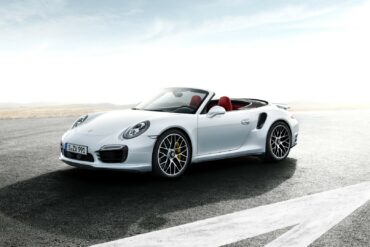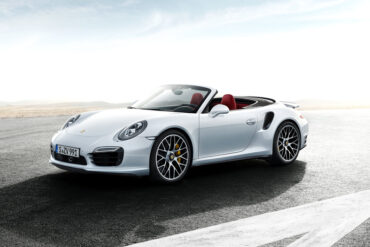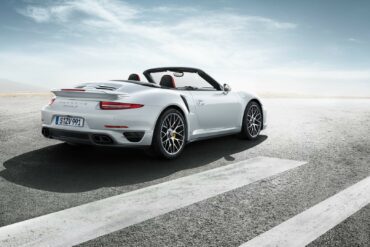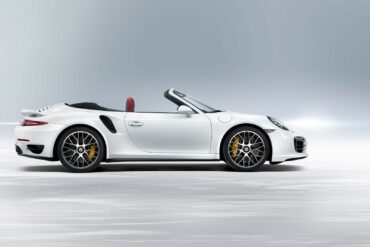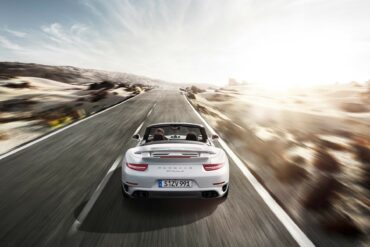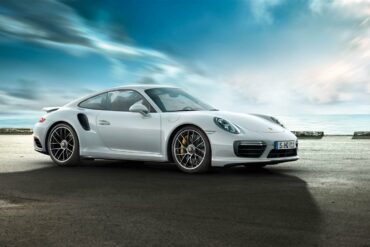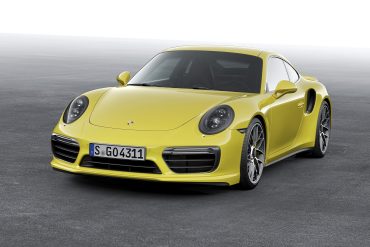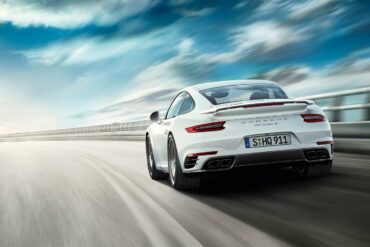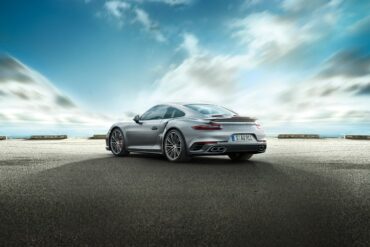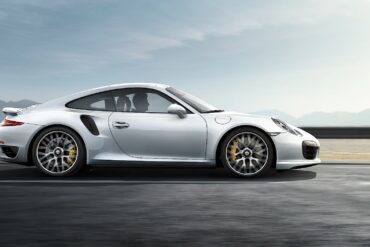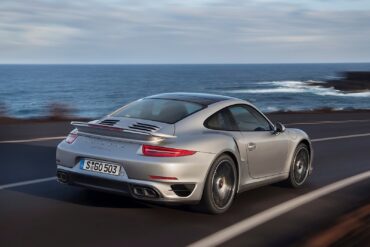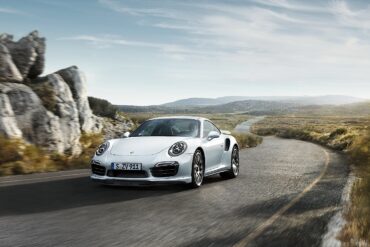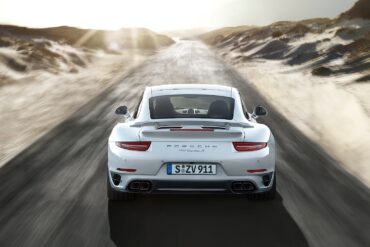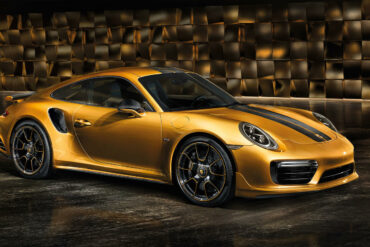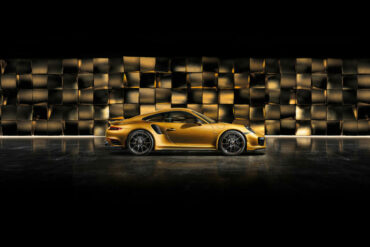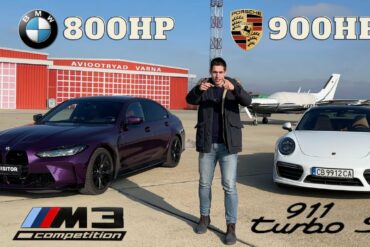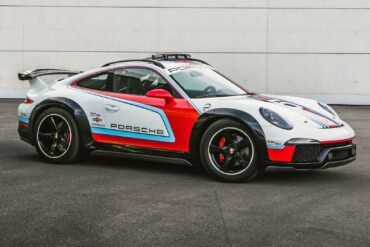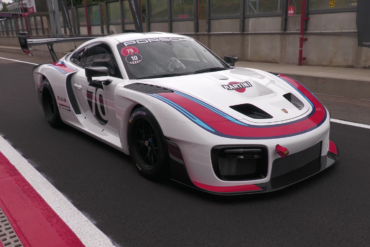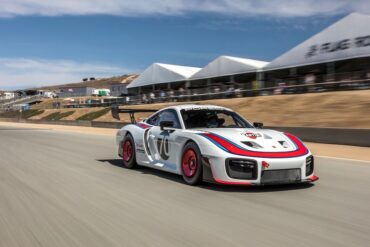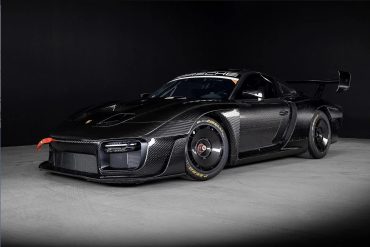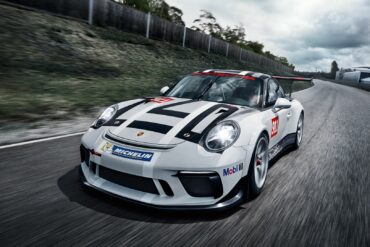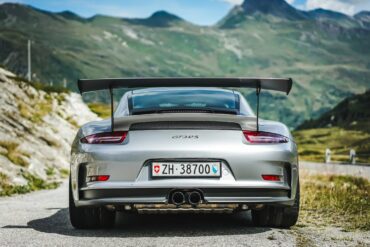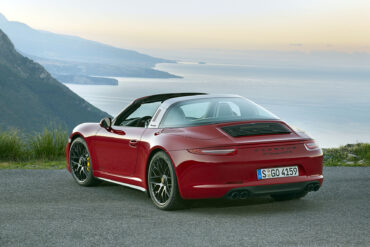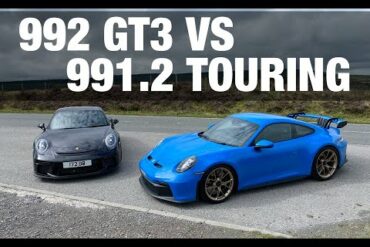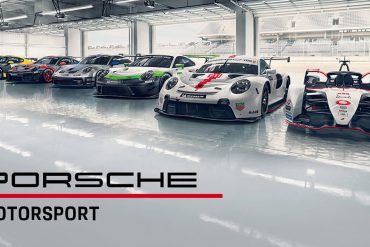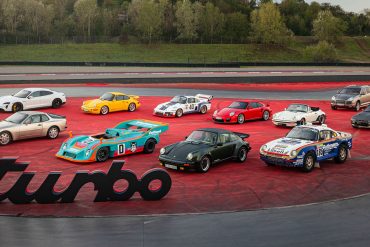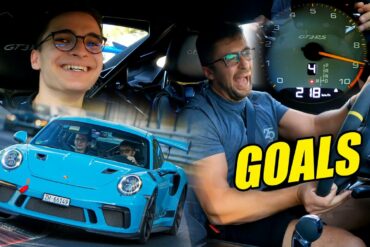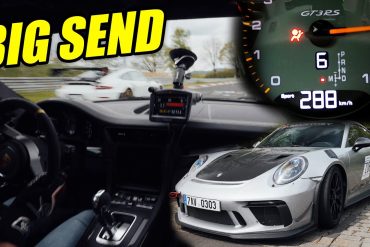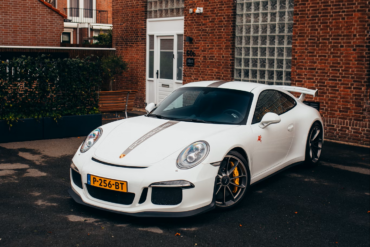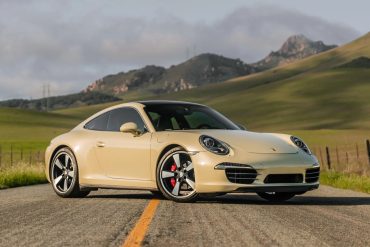Porsche 911 RSR (991) (2017-2019) – Pictures & Gallery...
Porsche 911 (991)
The Type 991 911 series was the seventh generation of the iconic 911. The 991 generation models were unmistakably 911 in looks and design philosophy, but the 991 was really the ultimate evolution of Porsche 911s becoming highly technical, high quality and well built machines. Quality improved and the technology jump finally vaulted Porsche to the top of the automakers in terms of building the best cars on the planet. The Type 991 represented the most technically advanced 911 model to date and the 991 looked more powerful than any other 911 before – an effect that was heightened by the wider track and a stretched wheelbase. It also featured adaptive aerodynamics: the 911 was the first series sports car from Porsche to adopt this technology from the 918 Spyder hybrid super sports car. The 991.1 generation cars launched as MY 2012 cars. The 345hp 3.4 liter Carrera and 400hp 3.8 liter Carrera S launched first, in both Coupe and Cabriolet bodystyles and could be had with either rear and all-wheel drive drivetrains. The 991s all got electric power steering which took away some of the feel we were used to. The Carrera S got PASM standard (optional on the Carrera). The new Turbo (in coupe and cabriolet) came out in 2013, now with a whopping 512hp. See all of our Porsche 991 Research.
Two decades after the different 911 GT1 cars the mid-engined 911 is back! In order to install a proper diffuser under the rear end of the 991, the engine had to make room for it and the engine/transmission unit was rotated 180 degrees. The extended rear diffuser, a top-suspended rear wing and the new side mirrors help to increase downforce with reduced drag. The FIA rules meant no turbo was needed due to power limits, so the normally aspirated 4-litre flat-6 was taken from the 991 GT3 R.
(2017-2019) Porsche 911 RSR (991) Technical Specifications Technical data Porsche 911 RSR model year 2017 Concept Single-seater race car for...
This was the fourth version of the 991 RSR - the first two came with the rear engine, then the first mid-engine version was launched (all 4.0-litre) and finally the mid-engined RSR 4.2 with the largest 911 engine ever made. The increase in the engine capacity is a question mark as on production models the capacities are decreased and turbochargers are used. The 991 RSR 4.2 didn't have anything in common with the production cars anymore. No change in terms of power-to-weight ratio.
(2019-2021) Porsche 911 RSR (991.2) Technical Specifications Technical data Porsche 911 RSR model year 2019 Engine Water-cooled six cylinder boxer...
At the FIA World Endurance Championship WEC, two 911 RSR by the Porsche GT Team will be saying farewell to...
2019 Porsche 911 Speedster (991.2) Technical Specifications Engine Naturally aspirated flat-six (boxer) engine No of cylinders 6 Valves/cylinders 4 Displacement 3,996...
Make no mistake that the Speedster is an absolutely fitting conclusion to the 991-generation. The Porsche 911 Speedster is an ingenious amalgamation of the latest technologies on offer, and the more simple ingredients that have been a principle of driving enjoyment since the invention of automobiles. A 502-horsepower engine, without turbochargers. A modern transmission, with just one clutch. A state-of-the-art suspension and chassis, with an unsullied purity. The list goes on. Perhaps the only drawback is that the Speedster’s rarity and price.
2019 Porsche 911 Speedster (991) Pictures & Gallery ...
Porsche is celebrating their 70 years in the making with the Porsche 911 Speedster Concept car. With the Carrera Cabriolet 4 body as its canvas, the Speedster concept pays homage to its predecessors - most notably, the Porsche 356 1500 Speedster. The limited production Speedster is immediately distinguishable from the current 911 line-up, with its “double bubble” tonneau cover and other unique offerings and design tweaks.
The 991.2 Targa did get some mild design changes, but they are all inline with the rest of the 991.2 changes. Despite the mild styling revisions, it’s a dramatically different car in terms of its engine. The iconic and highly regarded naturally aspirated 3.4-litre flat-six engine has been ousted for a more environmentally friendly twin-turbocharged 3.0-litre. It keeps its all-wheel drive system and is still an all-weather 911. A sports car with all-wheel drive is the first choice for more than one in three Porsche 911 buyers. It is sporty and comfortable, the turbo engines more powerful and consume less, with the improved all-wheel drive.
2016 – 2019 Porsche 911 Targa 4 (991.2) Pictures & Gallery...
2016 Porsche 911 Targa 4 (991.2) Technical Specifications Engine Engine layout Rear Engine Engine type Boxer, twin-turbo Cylinders 6 Valves per...
2017 Porsche 911 Targa 4 (991.2) Technical Specifications Engine Engine layout Rear Engine Engine type Boxer, twin-turbo Cylinders 6 Valves per...
2018 Porsche 911 Targa 4 (991.2) Technical Specifications Engine Engine layout Rear Engine Engine type Boxer, twin-turbo Cylinders 6 Valves per...
2019 Porsche 911 Targa 4 (991.2) Technical Specifications Engine Engine layout Rear Engine Engine type Boxer, twin-turbo Cylinders 6 Valves per...
For this 991 generation Targa, Porsche went back to the original Targa concept, albeit with an even sexier design and some very cool technical tricks to boot. Porsche wanted to resurrect its classic design, but the company feared that owners would not want to get out of the car, lift off the roof panel, and stow it in the trunk. The other issue was, in the words of 911 product line director Dr. Erhard Mossle, "that the manual solution was a little bit old-fashioned." The 911 Targa 4 gets the same 350 horsepower, 3.4-liter six-cylinder motor as its hardtop siblings.
2014 – 2015 Porsche 911 Targa 4 Pictures & Gallery ...
2014 Porsche 911 Targa 4 (991) Technical Specifications Engine layout Rear engine Engine type 6-cylinder boxer engine Cylinders 6 Valves per...
2015 Porsche 911 Targa 4 (991) Technical Specifications Engine layout Rear engine Engine type 6-cylinder boxer engine Cylinders 6 Valves per...
The 911 Targa 4 GTS isn't the fastest or best performing 911. It is heavier, softer and not as fast as every other GTS model. But we still love it. The Targa 4 GTS has amazing performance coupled with the sexiest body in the business. In GTS trim the Targa body looks even better. This is the car you get when you can only choose one 911 and you need it for fun weekends, daily driving and taking the wife out to a fancy restaurant. With 450 hp and 405 lb-ft from 2150 to 5000 rpm, it also has more than enough street performance than you could ever need. Buy one.
2017 – 2019 Porsche 911 Targa 4 GTS (991.2) Pictures & Gallery...
2017 Porsche 911 Targa 4 GTS (991.2) Technical Specifications Engine Engine layout Rear Engine Engine type Boxer, twin-turbo Cylinders 6 Valves...
2018 Porsche 911 Targa 4 GTS (991.2) Technical Specifications Engine Engine layout Rear Engine Engine type Boxer, twin-turbo Cylinders 6 Valves...
2019 Porsche 911 Targa 4 GTS (991.2) Technical Specifications Engine Engine layout Rear Engine Engine type Boxer, twin-turbo Cylinders 6 Valves...
The Targa 4 GTS gets Porsche’s a powerful non-turbo rear-mounted flat-six engine with 430 bhp @ 7500 rpm and 325 ft lbs of torque from 5750 rpm, driven to all four wheels via Porsche Traction Management. Performance is also enhanced via the standard Sport Chrono package, which provides faster throttle response and more aggressive shift mapping. In addition, the GTS benefits from Porsche Active Suspension Management - Porsche’s proprietary adaptive suspension system with continuously variable dampers. Mechanically, this is the perfect package for a daily 911 that is also performance focused when you need it to be.
2015 – 2016 Porsche 911 Targa 4 GTS Pictures & Gallery ...
2015 Porsche 911 Targa 4 GTS (991) Technical Specifications Porsche Models Technical Data 911 Targa 4 GTS Engine Engine layout Rear...
2016 Porsche 911 Targa 4 GTS (991) Technical Specifications Porsche Models Technical Data 911 Targa 4 GTS Engine Engine layout Rear...
The 991.2 911 Targa 4S is powered by the latest water-cooled 3.0-liter twin-turbocharged flat-six from Porsche, producing 420 hp and 368 lb-ft of torque. It can be optioned with a PDK seven-speed dual-clutch automatic (a seven-speed manual is standard) and all-wheel drive is standard. Whereas the two earlier generations of Targas were little more than 911 Carreras with large glass sunroofs, the 991-series Targa nailed the look and feel of the original.
2016 – 2019 Porsche 911 Targa 4S (991.2) Pictures & Gallery...
2016 Porsche 911 Targa 4S (991.2) Technical Specifications Engine Engine layout Rear Engine Engine type Boxer, twin-turbo Cylinders 6 Valves per...
2017 Porsche 911 Targa 4S (991.2) Technical Specifications Engine Engine layout Rear Engine Engine type Boxer, twin-turbo Cylinders 6 Valves per...
2018 Porsche 911 Targa 4S (991.2) Technical Specifications Engine Engine layout Rear Engine Engine type Boxer, twin-turbo Cylinders 6 Valves per...
2019 Porsche 911 Targa 4S (991.2) Technical Specifications Engine Engine layout Rear Engine Engine type Boxer, twin-turbo Cylinders 6 Valves per...
This is the open-top model for those who don’t want the full convertible experience – and it’s only available in the wide-hipped four-wheel drive bodyshell. The new Targa is a striking design, echoing the 1965 original with its fixed rollover bar. The Targa 4S, gets you the more powerful 3.8 engine from the Carrera S. It mixes regular Carrera 4S go with a sense of style and everyday usability (those occasional rear seats, the real possibility of 30mpg in everyday driving). Great car.
2014 – 2015 Porsche 911 Targa 4S Pictures & Gallery ...
2014 Porsche 911 Targa 4S (991) Technical Specifications Engine layout Rear engine Engine type 6-cylinder boxer engine Cylinders 6 Valves per...
2015 Porsche 911 Targa 4S (991) Technical Specifications Engine layout Rear engine Engine type 6-cylinder boxer engine Cylinders 6 Valves per...
2017 – 2019 Porsche 911 Turbo (991.2) Pictures & Gallery ...
Porsche 911 Turbo & Turbo S (991.1) Technical Specs & Performance Here year is year of introduction, not model year....
The Cabriolet version of the 991.2 Turbo got the same updates as its coupe sibling. The engine in the 991.2 911 Turbo Cabriolet is a twin-turbocharged flat-six with 540 horsepower and 523 pound-feet of torque, up a decent 20 more horses versus the 991.1 Turbo Cab. Improvements that come from increases in boost and fuel-injection pressures. Rounding the skidpad, the Turbo posts 1.02 g’s relatively easily. The wide P Zeros in back and the standard four-wheel steering conspire to hide the fact that 62 percent of the Turbo’s 3656 pounds sits over the rear wheels. 0 - 60 mph is over in just 3 seconds.
2017 – 2019 Porsche 911 Turbo Cabriolet (991.2) Pictures & Gallery ...
2017 Porsche 911 Turbo Cabriolet (991.2) Technical Specifications Engine Engine layout Rear Engine Engine type Boxer, twin-turbo Cylinders 6 Valves per...
2018 Porsche 911 Turbo Cabriolet (991.2) Technical Specifications Engine Engine layout Rear Engine Engine type Boxer, twin-turbo Cylinders 6 Valves per...
2019 Porsche 911 Turbo Cabriolet (991.2) Technical Specifications Engine Engine layout Rear Engine Engine type Boxer, twin-turbo Cylinders 6 Valves per...
The 2014 Porsche 911 Turbo Cabriolet is a great companion to its coupe sibling. The Porsche 911 Turbo Cabriolet delivers the same blend of dynamism, performance and efficiency offered by the Coupe. The turbocharged 3.8-litre six-cylinder engine delivers 520 bhp and it helps drivers accelerate from zero to 60 mph in just 3.1 seconds (there goes your hair style). Compared to the 997.2 Turbo Cabriolet the new Turbo Cab delivers 30 bhp more power and are 0.2 seconds faster in terms of their standard acceleration. It is also up to 15% more efficient and more luxurious and comfortable to boot.
2014 – 2016 Porsche 911 Turbo Cabriolet (991) Pictures & Gallery ...
2014 Porsche 911 Turbo Cabriolet (991) Technical Specifications Engine layout Rear Engine Engine type Twin Turbo Boxer w/ VTG Cylinders 6...
2015 Porsche 911 Turbo Cabriolet (991) Technical Specifications Engine layout Rear Engine Engine type Twin Turbo Boxer w/ VTG Cylinders 6...
2016 Porsche 911 Turbo Cabriolet (991) Technical Specifications Engine layout Rear Engine Engine type Twin Turbo Boxer w/ VTG Cylinders 6...
At the heart of the 991.2 911 Turbo is a twin-turbocharged flat-six with 540 horsepower and 523 pound-feet of torque. That’s a meaningful 20 more horses than the 991.1 Turbo. Improvements that come from increases in boost and fuel-injection pressures. Rounding the skidpad, the Turbo posts 1.02 g’s relatively easily. The wide P Zeros in back and the standard four-wheel steering conspire to hide the fact that 62 percent of the Turbo’s 3656 pounds sits over the rear wheels. With sport-plus selected, the 991.2 Turbo hits a 1.0-second run to 30 mph and a 2.6-second zero-to-60 time.
2017 Porsche 911 Turbo Coupe (991.2) Technical Specifications Engine Engine layout Rear Engine Engine type Boxer, twin-turbo Cylinders 6 Valves per...
2018 Porsche 911 Turbo Coupe (991.2) Technical Specifications Engine Engine layout Rear Engine Engine type Boxer, twin-turbo Cylinders 6 Valves per...
2019 Porsche 911 Turbo Coupe (991.2) Technical Specifications Engine Engine layout Rear Engine Engine type Boxer, twin-turbo Cylinders 6 Valves per...
The 2014 Porsche 911 Turbo is a technological extravaganza. Adaptive aerodynamics, four-wheel steering, torque vectoring, active four-wheel drive, adaptive dampers, launch control, twin-clutch automatic gearbox – you get the picture. This is the first time we've had a chance to sample all of this on British roads. Two versions are available; both are powered by an uprated version of the previous 911 Turbo's 3.8-litre twin-turbo flat-six engine. The new 911 Turbo has even more power and more electronic systems. It is still a straight-line monster that will blow you away in terms of the sheer might of that engine and traction.
2014 – 2016 Porsche 911 Turbo (991) Pictures & Gallery ...
2014 Porsche 911 Turbo (991) Technical Specifications Engine layout Rear Engine Engine type Twin Turbo Boxer w/ VTG Cylinders 6 Valves...
2015 Porsche 911 Turbo (991) Technical Specifications Engine layout Rear Engine Engine type Twin Turbo Boxer w/ VTG Cylinders 6 Valves...
2016 Porsche 911 Turbo (991) Technical Specifications Engine layout Rear Engine Engine type Twin Turbo Boxer w/ VTG Cylinders 6 Valves...
Porsche offered the 991 Turbo S from the start of the production of the 991 Turbo. The unique features of the Turbo S were the GT3 mirrors, slightly different front spoiler grilles and interior features. As before, the Turbo S was a heavily equipped version of the Turbo. The powerkit added 29 KW of power and the following equipment came as standard: PDCC hydraulic rollbar system, Sport Chrono (Launch control and 0.15 bar overboost functions), dynamic engine mounts, PCCB Porsche Ceramic Composite Brakes, central lock wheels, full LED dynamic headlights, 18-way Sport Plus seats with memory.
2017 – 2019 Porsche 911 Turbo S Cabriolet (991.2) Pictures & Gallery ...
This is the fastest convertible GT you can buy. The Turbo S cab gets 572 bhp (39 hp more than the base turbo cab) and 553 ft lbs (9 ft lbs more than the regular cab) of torque. With the Turbo S, the PDCC Porsche Dynamic Chassis Control hydraulic roll bars came as standard. The PCCB Porsche Ceramic Composite Brakes had been standard on the Turbo S already since the 996 generation. New options included the radar-based lane change assist and a lift system for the front axle (increased ground clearance by 1.6″/40 mm). The PCM now had a multi-touch screen like in the facelifted 991 Carrera.
2017 Porsche 911 Turbo S Cabriolet (991.2) Technical Specifications Engine Engine layout Rear Engine Engine type Boxer, twin-turbo Cylinders 6 Valves...
2018 Porsche 911 Turbo S Cabriolet (991.2) Technical Specifications Engine Engine layout Rear Engine Engine type Boxer, twin-turbo Cylinders 6 Valves...
2019 Porsche 911 Turbo S Cabriolet (991.2) Technical Specifications Engine Engine layout Rear Engine Engine type Boxer, twin-turbo Cylinders 6 Valves...
2014 – 2016 Porsche 911 Turbo S Cabriolet (991) Pictures & Gallery ...
Everything you need to know about the 991.1 Turbo S Cab comes from Car and Driver test results. "Launch control puts the computer in charge and sends the 3741-pound Turbo S Cab to the far side of 60 mph in just 2.8 seconds. A quarter-mile that nearly breaks into the 10s—11.1 seconds at 124 mph—attests to how serious this car gets when provoked. We saw 1.0 g on the skidpad and a stopping distance of 151 feet, both strong numbers abetted by the hilariously staggered Pirelli P Zeros (245/35 in front, 305/30 in back)". This is in a comfortable, all-wheel drive, grand touring convertible.
2014 Porsche 911 Turbo S Cabriolet (991) Technical Specifications Engine layout Rear Engine Engine type Twin Turbo Boxer w/ VTG Cylinders...
2015 Porsche 911 Turbo S Cabriolet (991) Technical Specifications Engine layout Rear Engine Engine type Twin Turbo Boxer w/ VTG Cylinders...
2016 Porsche 911 Turbo S Cabriolet (991) Technical Specifications Engine layout Rear Engine Engine type Twin Turbo Boxer w/ VTG Cylinders...
With the Turbo S, the PDCC Porsche Dynamic Chassis Control hydraulic roll bars came as standard. The PCCB Porsche Ceramic Composite Brakes had been standard on the Turbo S already since the 996 generation. New options included the radar-based lane change assist and a lift system for the front axle (increased ground clearance by 1.6″/40 mm). The PCM now had a multi-touch screen like in the facelifted 991 Carrera. Routes and places could be visualized with 360-degree images and satellite images. Engine gets more horsepower too, now with 572 bhp and 553 ft lbs of torque.
2017 – 2019 Porsche 911 Turbo S (991.2) Pictures & Gallery ...
2017 Porsche 911 Turbo S (991.2) Technical Specifications Engine Engine layout Rear Engine Engine type Boxer, twin-turbo Cylinders 6 Valves per...
2018 Porsche 911 Turbo S (991.2) Technical Specifications Engine Engine layout Rear Engine Engine type Boxer, twin-turbo Cylinders 6 Valves per...
2019 Porsche 911 Turbo S (991.2) Technical Specifications Engine Engine layout Rear Engine Engine type Boxer, twin-turbo Cylinders 6 Valves per...
2014 – 2016 Porsche 911 Turbo S (991) Pictures & Gallery ...
2014 Porsche 911 Turbo S (991) Technical Specifications Engine layout Rear Engine Engine type Twin Turbo Boxer w/ VTG Cylinders 6...
2015 Porsche 911 Turbo S (991) Technical Specifications Engine layout Rear Engine Engine type Twin Turbo Boxer w/ VTG Cylinders 6...
2016 Porsche 911 Turbo S (991) Technical Specifications Engine layout Rear Engine Engine type Twin Turbo Boxer w/ VTG Cylinders 6...
The 500 hundred numbered 911 Turbo S Exclusive Series cars cross the 600 hp mark with their 446 kW engines. The power increase does not make much difference performance wise, but it is good to know you have more than 600 hp. Similar in acceleration and top speed to the ‘regular’ Turbo S, the car reaches 200 km/h (124 mph) in 9.6 seconds (0.3 seconds faster than the regular Turbo S). The car comes standard with the Turbo Aerokit and roof panel made of carbon-fibre reinforced plastic.
2018 – 2019 Porsche 911 Turbo S Exclusive (991.2) Pictures & Gallery ...
2018 Porsche 911 Turbo S Exclusive (991.2) Technical Specifications Engine Engine layout Rear Engine Engine type Boxer, twin-turbo Cylinders 6 Valves...
2019 Porsche 911 Turbo S Exclusive (991.2) Technical Specifications Engine Engine layout Rear Engine Engine type Boxer, twin-turbo Cylinders 6 Valves...
Here we have a battle between two German sports cars: a 991.2-generation Porsche 911 Turbo S with a whooping 900...
The Porsche 911 Vision Safari a sports car-based rally car concept, designed and built by Porsche in 2012, based on the Porsche 911 (generation 991) and harkening back to the original car, the Porsche 911 SC Safari from 1978. Features a raised suspension, reinforced wheel housings and large bumpers.
The 2019 Porsche 935 is based on the popular 935/78 LM race car from the 1970s which was, given the name ‘Moby...
The 935 tribute car was a non-street-legal collector's car built in a series of 77 cars. It was built from the 911 991.2 GT3 R racing car, fitted with the engine and transmission from the 911 991.2 GT2 RS street car and with the bodykit showing some design details from the 935 cars. The problem: it was not as powerful as the 1978 935 was with even smaller engine and the modern car is much heavier, so the power-to-weight ratio was almost 60% better 40 years earlier.
The 2019 Porsche 935, a homage to the classic 935 race car, is a rare find with only 77 units...
The rear of the world’s most-produced GT racing car now houses a 4-litre, six-cylinder flat engine for even more drive. Thanks to thoroughbred motorsport technology, the compact engine with direct fuel injection delivers peak performance of 357 kW (485 hp). A range of innovative details also improve efficiency in addition to engine performance, ensuring even better durability of the naturally aspirated engine in racing mode and reduced maintenance costs.
Porsche 991 GT3 RS Morning Drive Put your headphones on and enjoy this awesome footage of a Porsche 991...
First Europe, then North America The 991.1 GTS was the second 911 offered as a GTS sub-brand. The first was...
Two of the Best – Head to Head This is a pretty timely comparison video because I have been spending...
Old vs New GT3 Showdown Great hands-on review and comparison between two of our favorite 911s. A Porsche 911 992...
This weekend, on April 8-10, the streets of Southern California will host the Porsche Carrera Cup North America Presented by...
A visit to Porsche at the Retro Classics in Stuttgart is always a journey through time. This year, the sports...
Not too much to write about here. This is just a great video of a 991.2 GT3 RS being spanked...
Here’s what happens when you let a rally driver slide behind the wheel of a Porsche GT3 RS by Manthey...
Porsche introduced the 991 GT3 for the 2014 model year, as follow up to the multiple 997 GT3 variants. The...
The 2014 50th Anniversary Edition 911 was built by Porsche to commemorate the 911’s birthday, 50 years after its production...


